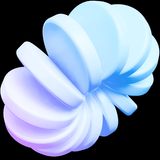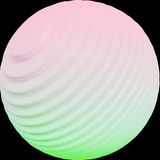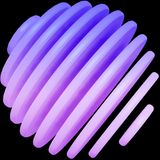Spruce comes with basic button variations like size, width, color, state and can also generate your custom color variants.
You can use two default color variants named: primary and secondary. To overwrite colors, see the configurable variables section.
<button type="button" class="btn btn--primary">Primary</button>
<a href="https://conedevelopment.com" class="btn btn--secondary">Secondary</a>Use <a> for links and navigation between pages and <button> for actions (in page) like a form sending or modal opening.
Use the btn--outline-* modifier class for outlined buttons. If you want to have more control over the look, use the following specific color values under the btn at the $colors map, like in this example:
@use 'sprucecss/scss/spruce' with (
$colors: (
'btn': (
'dark-background': hsl(0deg 0% 0%),
'dark-background-hover': hsl(0deg 0% 20%),
'dark-foreground': hsl(0deg 0% 100%),
'dark-outline-border': hsl(260deg 4% 70%),
'dark-outline-foreground': hsl(0deg 0% 0%),
'dark-outline-foreground-hover': hsl(0deg 0% 100%),
'dark-outline-background-hover': hsl(0deg 0% 0%),
'dark-outline-focus-ring': hsl(295deg 100% 50%),
),
),
);To make a custom outline button, you need to use the btn-variant-outline mixin.
<button type="button" class="btn btn--outline-primary">Primary</button>
<a href="https://conedevelopment.com" class="btn btn--outline-secondary">Secondary</a>Use the btn--*-shadow modifier class to add a shadow to the button. This class is generated automatically if there is a color value under the btn section with the *-shadow key in the $colors map.
<button type="button" class="btn btn--primary btn--primary-shadow">Primary</button>
<a href="https://conedevelopment.com" class="btn btn--secondary btn--secondary-shadow">Secondary</a>Spruce came with three different button sizes: small, regular, large. Using the standard size, you don't have to use any modifier. For small use: btn--sm, for large use: btn--lg class.
<button type="button" class="btn btn--primary btn--sm">Small</button>
<button type="button" class="btn btn--primary">Regular</button>
<button type="button" class="btn btn--primary btn--lg">Large</button>To disable any button element, use the disabled boolean attribute. The disabled style is a bit dimmer (opacity: 0.5;) and has the pointer-evens: none; to prevent the user actions.
The disabled attribute doesn't work on links, so you have to use the btn--disabled modifier class. Also, you should omit the href attribute and set the aria-disabled="true".
<button type="button" class="btn btn--primary" disabled>Disabled button</button>
<button type="button" class="btn btn--secondary" disabled>Disabled button</button>
<a class="btn btn--primary btn--disabled" aria-disabled="true">Disabled button</a>
<a class="btn btn--secondary btn--disabled" aria-disabled="true">Disabled button</a>To display a block button, you can use the btn--block modifier class.
<button type="button" class="btn btn--primary btn--block">Block button</button>
<button type="button" class="btn btn--secondary btn--block">Block button</button>To use any icon with Spruce, you must specify it in image format, preferably in SVG, because we set its height and width. Use with the btn__icon class on the image. Place it before (left) or after the caption (right) depending on the position.
The .btn has inline-flex display with a gap value.
<button type="button" class="btn btn--primary">
<svg class="btn__icon">...</svg>
Read more
</button>
<button type="button" class="btn btn--secondary">
Read more
<svg class="btn__icon">...</svg>
</button>To make an only icon button use the btn--icon modifier class. If you create an icon button, use aria-label to add a caption.
<button class="btn btn--secondary btn--icon" aria-label="Copy Text">
<svg class="btn__icon">...</svg>
Read more
</button>There are default variables that you can configure to customize the button's look.
Also, Spruce manage the colors in a separate Sass map named $colors (under the btn object).
You can create new button color variants using the btn-variant mixin. First, you must declare the new button's colors at the $color map under the btn object. After this, all you have to do is to call the mixin on the preferred selector.
More information about the btn-variant() please visit the related mixin page.


